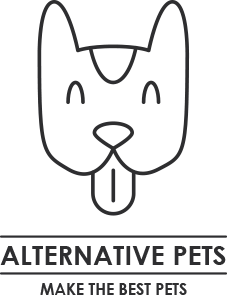Introduction to Pharmacy Workflow Optimization
Pharmacy workflow optimization involves streamlining processes and procedures within a pharmacy to enhance efficiency, reduce errors, and improve patient care. With the increasing demands on pharmacies to handle more prescriptions and offer additional services, optimizing workflow is crucial to maintaining high standards of service and patient satisfaction. For more detailed information, you can visit pafikotakolaka.org.
Importance of Pharmacy Workflow Optimization
Improving Efficiency
Efficient workflow processes help pharmacies handle a higher volume of prescriptions and tasks with fewer resources. This leads to faster service, reduced wait times for patients, and the ability to manage more complex operations without compromising quality.
Reducing Errors
Optimizing workflow minimizes the risk of errors in medication dispensing, prescription processing, and inventory management. By implementing standardized procedures and utilizing technology, pharmacies can significantly reduce the likelihood of mistakes that could harm patients.
Enhancing Patient Care
A well-optimized workflow allows pharmacy staff to spend more time on patient care activities, such as medication counseling, health screenings, and personalized services. This leads to better health outcomes and increased patient satisfaction.
Key Areas for Workflow Optimization
Prescription Processing
Streamlining Prescription Entry
- Automated Prescription Entry: Implementing electronic prescription systems (e-prescriptions) reduces manual data entry errors and speeds up the prescription filling process.
- Standardized Procedures: Developing standardized procedures for prescription verification and entry ensures consistency and accuracy across all staff members.
Efficient Medication Dispensing
- Automated Dispensing Systems: Utilizing automated dispensing machines and robots can significantly speed up the medication dispensing process and reduce the risk of errors.
- Batch Processing: Grouping similar tasks, such as filling multiple prescriptions for the same patient or processing high-volume medications, can increase efficiency and reduce handling time.
Prescription Verification
- Double-Check Systems: Implementing a double-check system where another pharmacy staff member verifies the prescription before dispensing ensures accuracy and reduces the risk of errors.
- Barcode Verification: Using barcode scanning technology to verify medications before dispensing adds an additional layer of safety and accuracy.
Inventory Management
Real-Time Inventory Tracking
- Inventory Management Software: Implementing advanced inventory management software helps track medication stock levels in real time, reducing the risk of stockouts or overstocking.
- Automated Reordering: Setting up automated reordering systems ensures that medications are reordered promptly when stock levels fall below a predetermined threshold.
Efficient Storage Solutions
- Organized Storage: Maintaining a well-organized storage system with clearly labeled sections for different types of medications helps staff quickly locate and retrieve items.
- Temperature Control: Ensuring proper storage conditions, such as temperature control for sensitive medications, helps maintain medication efficacy and safety.
Expiry Date Management
- Expiry Date Tracking: Regularly checking and managing medication expiry dates using inventory software helps prevent the dispensing of expired medications.
- First-In, First-Out (FIFO) System: Implementing a FIFO system ensures that older stock is used before newer stock, reducing waste and ensuring medication safety.
Patient Services
Medication Counseling
- Dedicated Counseling Areas: Creating dedicated spaces for private medication counseling enhances patient privacy and comfort.
- Appointment Scheduling: Implementing an appointment system for medication counseling ensures that patients receive focused attention and reduces wait times.
Immunization Services
- Streamlined Workflow: Developing a streamlined workflow for immunization services, including scheduling, documentation, and administration, improves efficiency and patient experience.
- Training and Certification: Ensuring that pharmacy staff are properly trained and certified to administer immunizations enhances service quality and patient safety.
Medication Therapy Management (MTM)
- Integrated MTM Services: Integrating MTM services into the pharmacy workflow allows pharmacists to review patient medications, identify potential issues, and provide personalized care.
- Documentation and Follow-Up: Implementing a system for documenting MTM sessions and scheduling follow-up appointments ensures continuity of care and improved patient outcomes.
Implementing Technology Solutions
Pharmacy Management Systems
- Comprehensive Systems: Implementing a comprehensive pharmacy management system that integrates prescription processing, inventory management, and patient services improves overall efficiency and accuracy.
- User-Friendly Interfaces: Choosing systems with user-friendly interfaces reduces training time and minimizes errors during use.
Electronic Health Records (EHR)
- Integration with EHR: Integrating pharmacy management systems with electronic health records (EHR) allows for seamless data sharing between healthcare providers, improving patient care and reducing duplication of effort.
- Access to Patient Information: Having access to complete patient information, including medical history and current medications, helps pharmacists provide more informed and personalized care.
Automation and Robotics
- Automated Dispensing Machines: Utilizing automated dispensing machines reduces the time and effort required for medication dispensing, increasing efficiency and accuracy.
- Robotic Systems: Implementing robotic systems for tasks such as counting pills and labeling medications further streamlines the dispensing process and reduces the risk of errors.
Staff Training and Development
Continuous Training Programs
- Ongoing Education: Providing continuous training and education for pharmacy staff ensures they stay updated on the latest practices, technologies, and regulations.
- Skill Development: Offering skill development programs in areas such as customer service, medication counseling, and inventory management enhances overall service quality.
Performance Monitoring
- Regular Assessments: Conducting regular performance assessments helps identify areas for improvement and provides opportunities for staff development.
- Feedback Mechanisms: Implementing feedback mechanisms, such as patient surveys and staff meetings, allows for continuous improvement and adaptation to changing needs.
Team Collaboration
- Effective Communication: Promoting effective communication among pharmacy staff ensures that everyone is informed about workflow changes, new procedures, and any issues that arise.
- Collaborative Environment: Fostering a collaborative work environment where staff feel supported and valued improves morale and enhances overall efficiency.
Conclusion
Optimizing pharmacy workflow is essential for enhancing efficiency, reducing errors, and improving patient care. By focusing on key areas such as prescription processing, inventory management, and patient services, and by implementing technology solutions, pharmacies can streamline their operations and provide better service to their patients. Continuous training and development of pharmacy staff further support these efforts, ensuring that the pharmacy operates at its highest potential. As the healthcare landscape evolves, ongoing workflow optimization will remain crucial to maintaining high standards of care and meeting the growing demands of patients.



